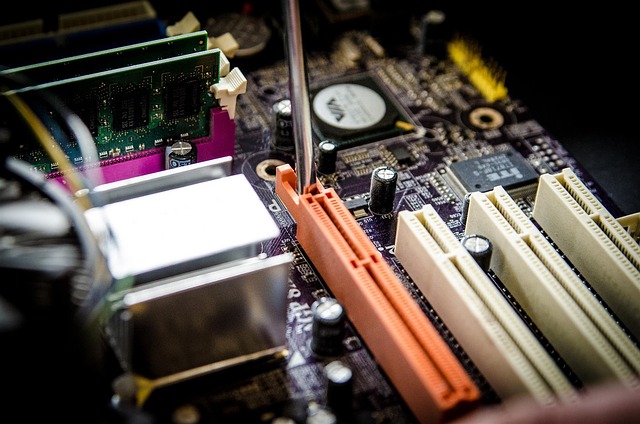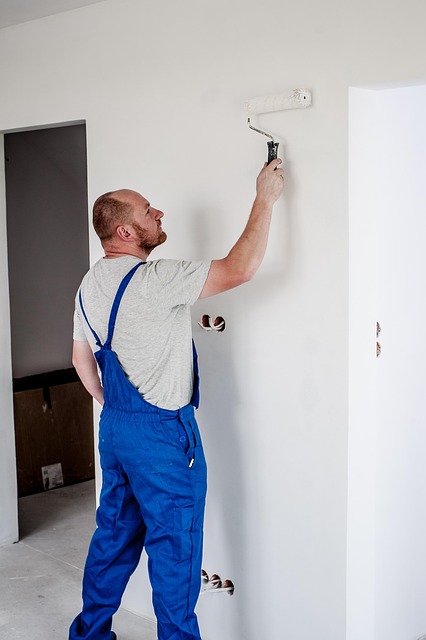Mastering basic appliance installation and maintenance through understanding electrical circuits, plumbing, and structural considerations empowers DIY enthusiasts in home repair and maintenance. Basic troubleshooting techniques, including power supply checks and part replacements, resolve common issues. Regular check-ups, cleaning, energy monitoring, and adhering to manufacturer guidelines extend appliance lifespans, preventing breakdowns, saving costs, and ensuring efficient operation.
Appliance installations and repairs are essential aspects of home repair and maintenance. Whether it’s setting up a new refrigerator or fixing a broken washing machine, understanding basic installation techniques can save you time and money. This article guides you through the essentials of appliance installation, common repair strategies for home appliances, and proactive maintenance tips to extend their lifespan. By following these tips, you’ll keep your household running smoothly and efficiently.
- Understanding Appliance Installation Basics
- Common Repair Techniques for Home Appliances
- Maintenance Tips to Extend Appliance Lifespan
Understanding Appliance Installation Basics

Understanding the basics of appliance installation is a crucial step in ensuring smooth home repair and maintenance. It involves more than just plugging in a new fridge or washing machine; it requires knowledge of electrical circuits, plumbing systems, and structural integrity. For instance, installing a dishwasher not only demands connecting water lines but also ensuring proper drainage to prevent leaks.
Moreover, understanding the dimensions and weight of appliances is essential to avoid damage during installation. Proper leveling and securing heavy appliances is vital to maintain stability and prevent accidents. By grasping these fundamentals, DIY enthusiasts can tackle basic installations with confidence, fostering a sense of self-reliance in home repair and maintenance.
Common Repair Techniques for Home Appliances

When it comes to common repair techniques for home appliances, understanding basic troubleshooting is key for any homeowner. The first step in fixing a malfunctioning appliance often involves checking power supplies and connections. This includes verifying that the appliance is properly plugged into a working outlet and that the circuit breaker or fuse has not tripped or blown, respectively. Simple adjustments like these can resolve issues ranging from a refrigerator not cooling to a washing machine failing to spin.
For more complex repairs, knowing how to replace common parts such as filters, belts, and sensors can significantly extend the lifespan of appliances. Home repair and maintenance enthusiasts often keep a stocked kit of replacement parts tailored to their most frequently encountered appliances. Additionally, seeking out online tutorials or consulting user manuals can guide DIYers through the process, ensuring safe and effective repairs without the need for professional intervention.
Maintenance Tips to Extend Appliance Lifespan

Regular maintenance is key to extending the lifespan of your appliances. Start by scheduling routine check-ups, especially for high-use items like refrigerators and washing machines. Look for any signs of damage, unusual noises, or changes in performance during these checks. Cleaning is another vital aspect; wipe down surfaces and remove built-up grime, as dirt can interfere with operation and lead to breakdowns. Many appliances also have filters that require periodic cleaning or replacement to maintain efficiency.
Additionally, keep an eye on energy usage; sudden spikes could indicate a problem. Stay updated on manufacturer recommendations for maintenance, including software updates (for modern smart appliances). Preventive measures like these not only lengthen appliance life but also save you from costly repairs and replacements in the long run, making your home repair and maintenance efforts more efficient and budget-friendly.
Appliance installation and repair are essential aspects of home maintenance, allowing you to extend the lifespan of your appliances and avoid costly replacements. By understanding basic installation principles, familiarizing yourself with common repair techniques, and implementing regular maintenance practices, you can ensure your home appliances remain in top condition for years to come. Embracing do-it-yourself approaches and staying informed about safety protocols will empower you to tackle minor issues promptly and effectively. Remember, proactive home repair and maintenance are key to a well-functioning household.
